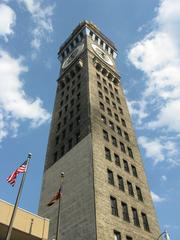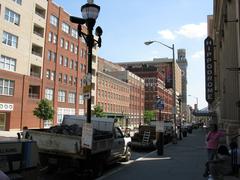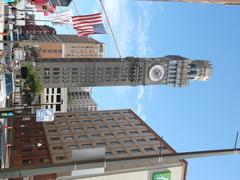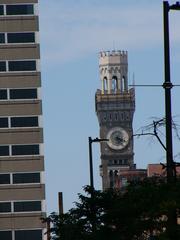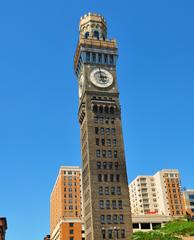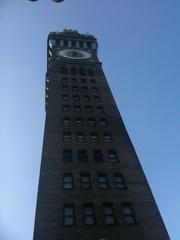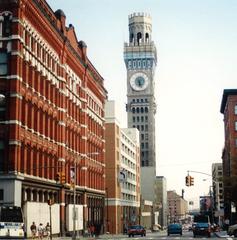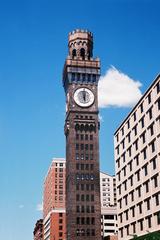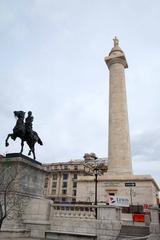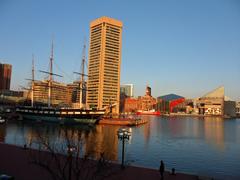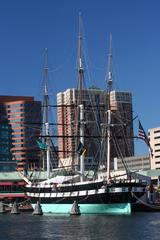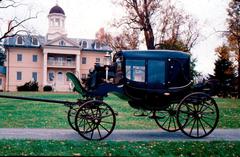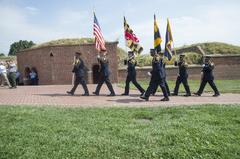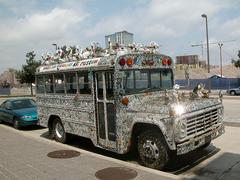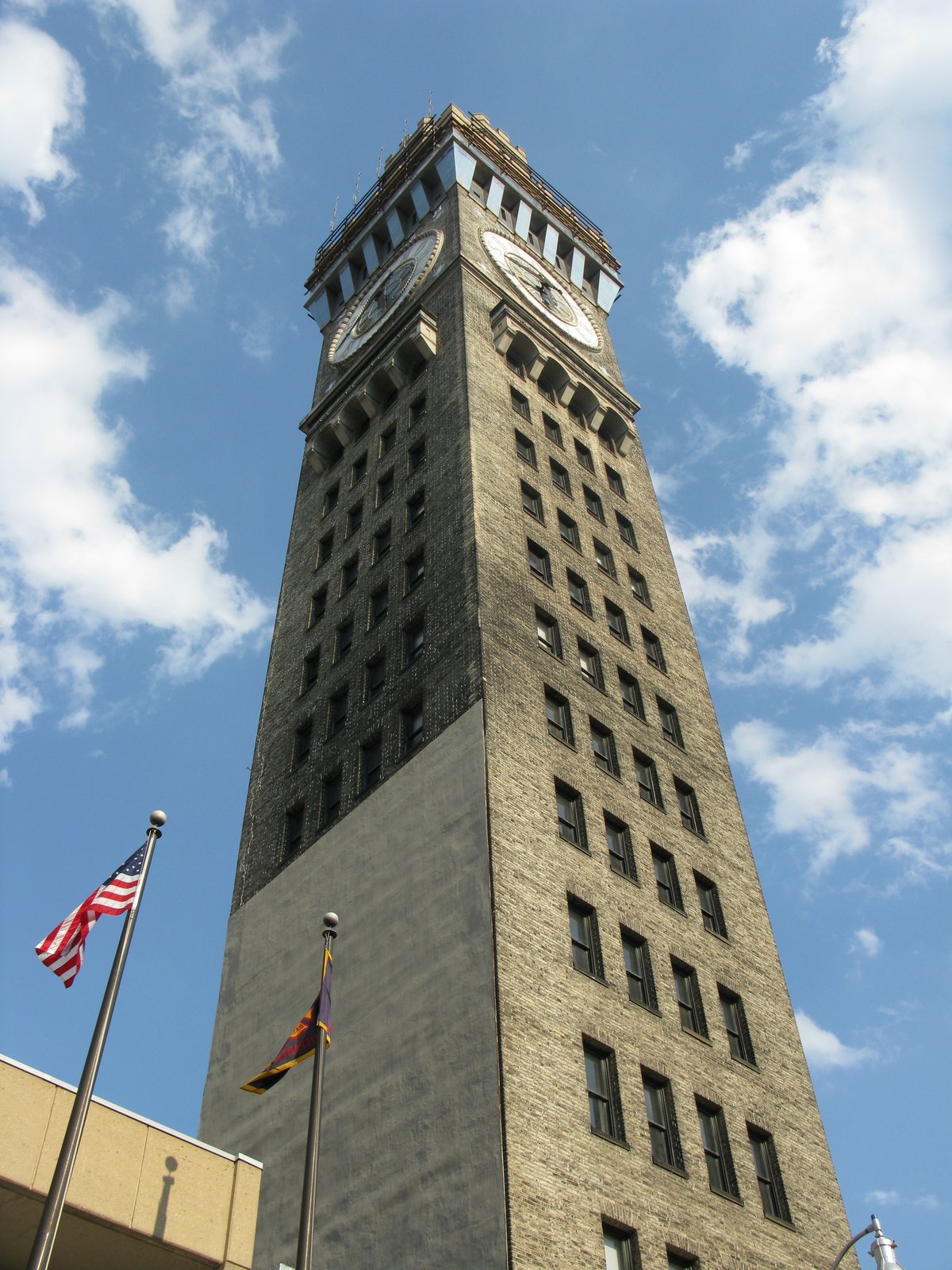
Comprehensive Guide to Visiting Bromo Seltzer Arts Tower, Baltimore, United States
Date: 01/08/2024
Introduction
The Bromo Seltzer Arts Tower is a towering symbol of Baltimore’s rich historical and cultural heritage. Standing at 289 feet, this iconic structure has been a prominent feature of the city’s skyline since its construction in 1911 (Bromo Seltzer Tower). Originally known as The Emerson Tower, it was designed by local architect Joseph Evans Sperry and commissioned by Captain Isaac Emerson, the inventor of the headache remedy Bromo-Seltzer. Modeled after the Palazzo Vecchio in Florence, Italy, the tower’s design reflects Emerson’s admiration for European architecture (Baltimore Heritage). Over the years, the tower has evolved from housing a significant industrial operation to becoming a vibrant hub for the arts, thanks to extensive preservation efforts. Today, it offers a unique blend of historical significance and contemporary artistic activity, making it a must-visit destination for both history buffs and art enthusiasts.
Table of Contents
- Introduction
- History and Significance
- Visitor Information
- Nearby Attractions
- Accessibility
- Architectural and Cultural Significance
- Historical Tours and Public Access
- Preservation and Restoration Efforts
- Community Impact
- FAQ
- Conclusion
History and Significance
Construction and Early Years
The Bromo Seltzer Arts Tower, originally known as The Emerson Tower, has been a prominent feature of Baltimore’s skyline since its construction in 1911. Designed by the local architect Joseph Evans Sperry, the tower was commissioned by Captain Isaac Emerson, the inventor of the headache remedy Bromo-Seltzer. The design of the tower was inspired by the Palazzo Vecchio in Florence, Italy, reflecting Emerson’s admiration for European architecture (Bromo Seltzer Tower).
At the time of its completion, the Bromo Seltzer Tower was the tallest building in Baltimore, standing at 289 feet. It was a marvel of its time, featuring a four-dial gravity-driven clock that was the largest in the world, even surpassing the size of London’s Big Ben. The clock, designed by Seth Thomas, remains one of the most iconic features of the tower (Baltimore Heritage).
The Iconic Bromo-Seltzer Bottle
One of the most distinctive features of the tower was the 51-foot revolving replica of a blue Bromo-Seltzer bottle that originally topped the structure. Illuminated by 596 lights, the bottle could be seen from as far as 20 miles away and served as a beacon for ship captains navigating towards the Light Street docks. Unfortunately, due to structural concerns, the bottle was removed in 1936, a decision that remains a point of contention among Baltimore residents (Bromo Seltzer Tower).
Transformation into an Arts Hub
The Bromo Seltzer Tower faced several threats of demolition over the years, especially after the Bromo-Seltzer factory was torn down in 1969. However, the tower was preserved and eventually transformed into an arts hub in 2007, thanks to the efforts of philanthropists Eddie and Sylvia Brown and the Baltimore Office of Promotion & The Arts (BOPA). The renovation provided 33 studio spaces for artists, making the tower a vibrant center for creativity and innovation (Baltimore Heritage).
Visitor Information
Visiting Hours and Tickets
The Bromo Seltzer Tower is open to the public on the second weekend of every month. Visitors can explore the artist studios, galleries, and the museum on the 15th floor. For a small fee, visitors can also take a tour of the clock room, where they can see the inner workings of the historic clock up close. Ticket prices for the clock room tour are $8 per person. More details can be found on the official website (Baltimore.org).
Travel Tips
To make the most of your visit, it’s recommended to check the tower’s official website for any updates on visiting hours or special events. Parking is available nearby, but using public transportation or rideshare services can be more convenient.
Nearby Attractions
While visiting the Bromo Seltzer Tower, consider exploring other nearby attractions such as the Inner Harbor, the Maryland Science Center, and the National Aquarium. These sites offer a wealth of activities and exhibits that can complement your visit to the tower.
Accessibility
The Bromo Seltzer Tower is committed to ensuring accessibility for all visitors. The building is equipped with elevators and ramps to accommodate those with mobility challenges. For specific accessibility inquiries, visitors can contact the tower’s management directly.
Architectural and Cultural Significance
The Bromo Seltzer Tower is not only a significant architectural landmark but also a cultural icon in Baltimore. Its design, modeled after the Palazzo Vecchio, showcases the influence of European architecture on American buildings in the early 20th century. The tower’s clock, with its unique BROMO-SELTZER lettering instead of numbers, adds to its distinctive character (Bromo Seltzer Tower).
The tower’s transformation into an arts center has further cemented its place in Baltimore’s cultural landscape. It now hosts a variety of events, including open mic nights, art exhibitions, and performances, making it a hub for the local arts community. The tower also houses the Emerson/Maryland Glass Museum, which features the largest collection of Bromo-Seltzer and Maryland Glass bottles in existence (Baltimore Arts).
Historical Tours and Public Access
The Bromo Seltzer Tower is open to the public on the second weekend of every month, allowing visitors to explore the artist studios, galleries, and the museum on the 15th floor. For a small fee, visitors can also take a tour of the clock room, where they can see the inner workings of the historic clock up close. The tours provide a fascinating glimpse into the tower’s history and its significance to the city of Baltimore (Baltimore.org).
Preservation and Restoration Efforts
The preservation of the Bromo Seltzer Tower has been a collaborative effort involving various stakeholders, including the Maryland Heritage Area Authority, which provided seed funding for the tower’s capital campaign. In 2017, a full restoration of the clock was completed, ensuring that this historic feature continues to function and delight visitors (Bromo Seltzer Tower).
Community Impact
The Bromo Seltzer Tower has had a significant impact on the local community, both as a historical landmark and as a center for the arts. The tower provides a space for artists to create, exhibit, and sell their work, contributing to the vibrancy and creativity of Baltimore. The Baltimore Office of Promotion & The Arts, which manages the tower, also produces large-scale events such as Light City, Artscape, and the Baltimore Book Festival, further enhancing the city’s cultural scene (Baltimore Arts).
FAQ
What are the Bromo Seltzer Tower visiting hours?
The tower is open to the public on the second weekend of every month.
How much are tickets for the Bromo Seltzer Tower?
Tickets for the clock room tour are $8 per person.
Is the Bromo Seltzer Tower accessible?
Yes, the tower is equipped with elevators and ramps to accommodate visitors with mobility challenges.
Conclusion
The Bromo Seltzer Arts Tower stands as a testament to Baltimore’s rich history and its ongoing commitment to the arts. From its early days as the tallest building in the city to its current role as a thriving arts center, the tower continues to be a beloved landmark and a source of inspiration for residents and visitors alike. Its unique architectural features, historical significance, and vibrant arts community make it a must-visit destination in Baltimore (Baltimore Heritage, Bromo Seltzer Tower).
Call to Action
Plan your visit to the Bromo Seltzer Arts Tower today! Check out the official website for the latest updates on visiting hours and ticket prices. Don’t forget to explore other nearby attractions and share your experiences on social media. For more information on Baltimore’s historical sites and cultural events, follow us on our blog and download our mobile app Audiala.
